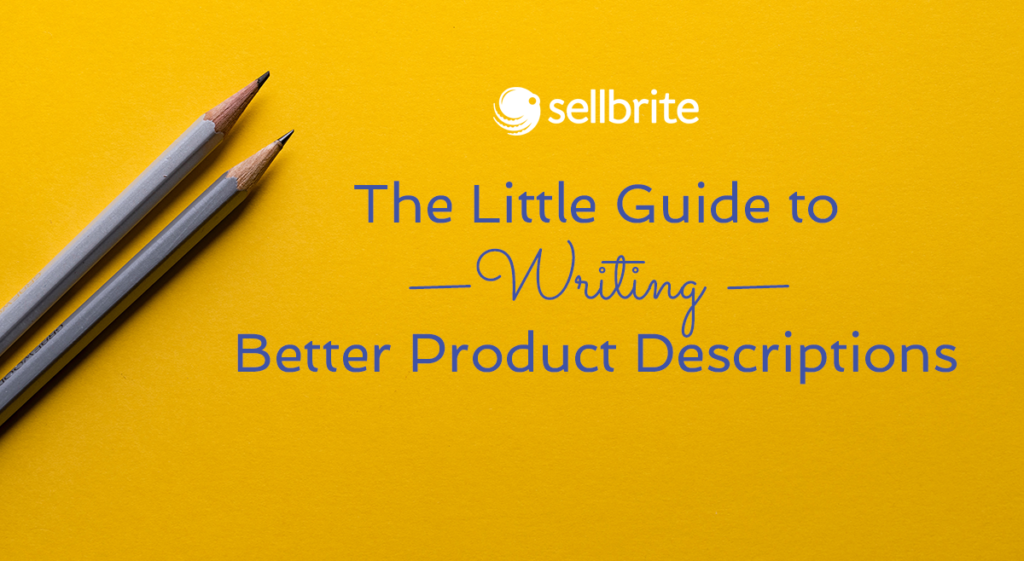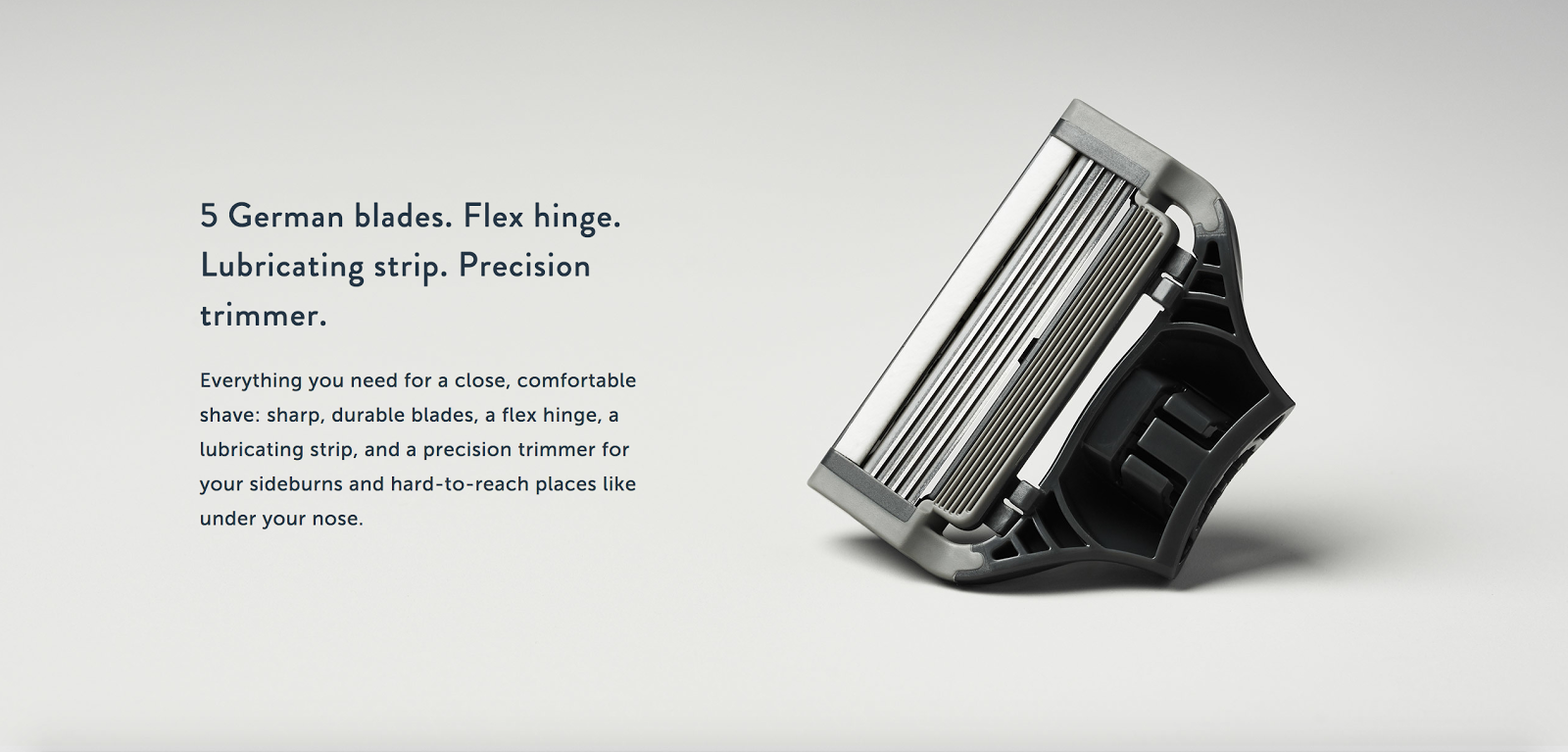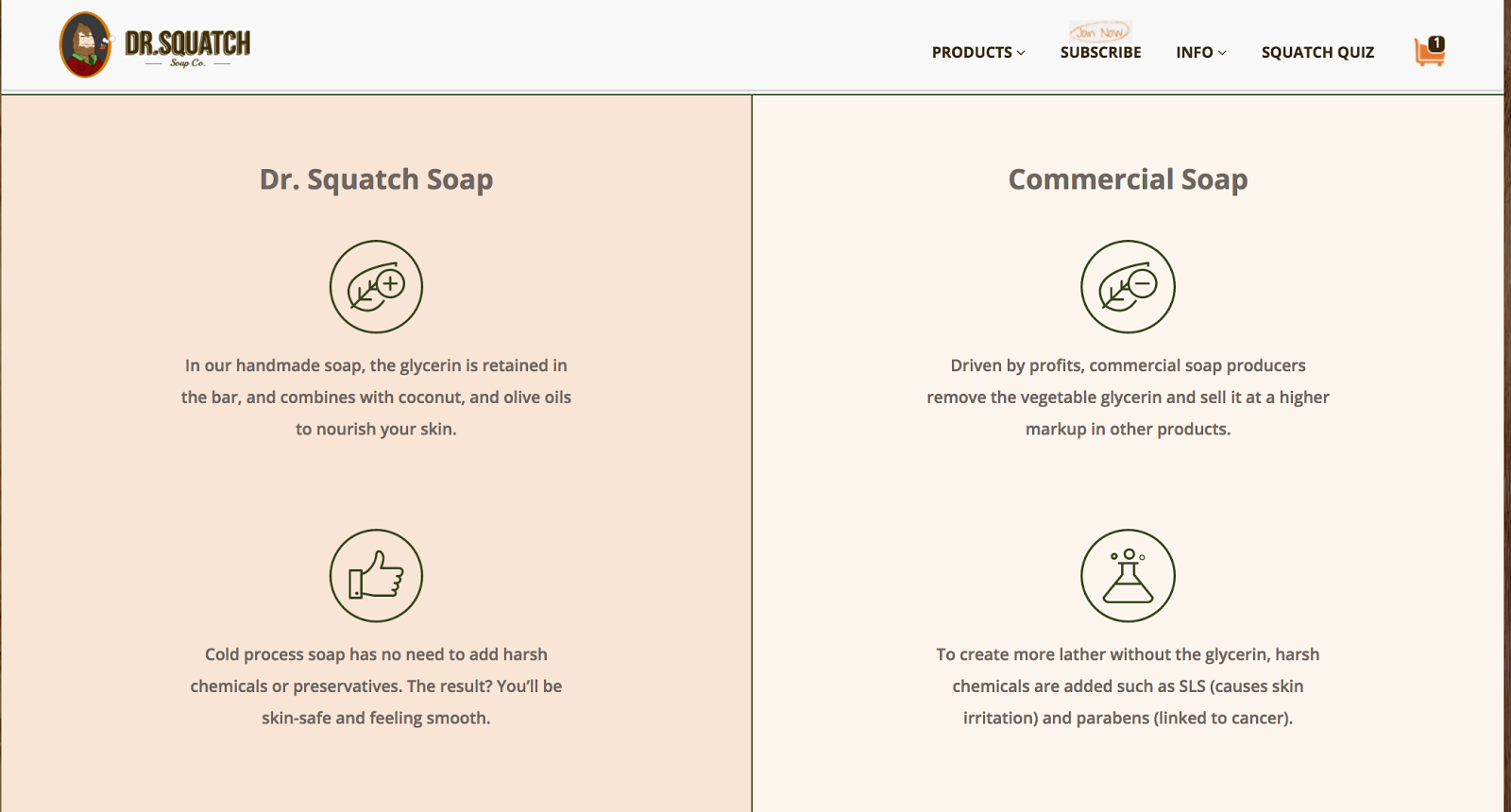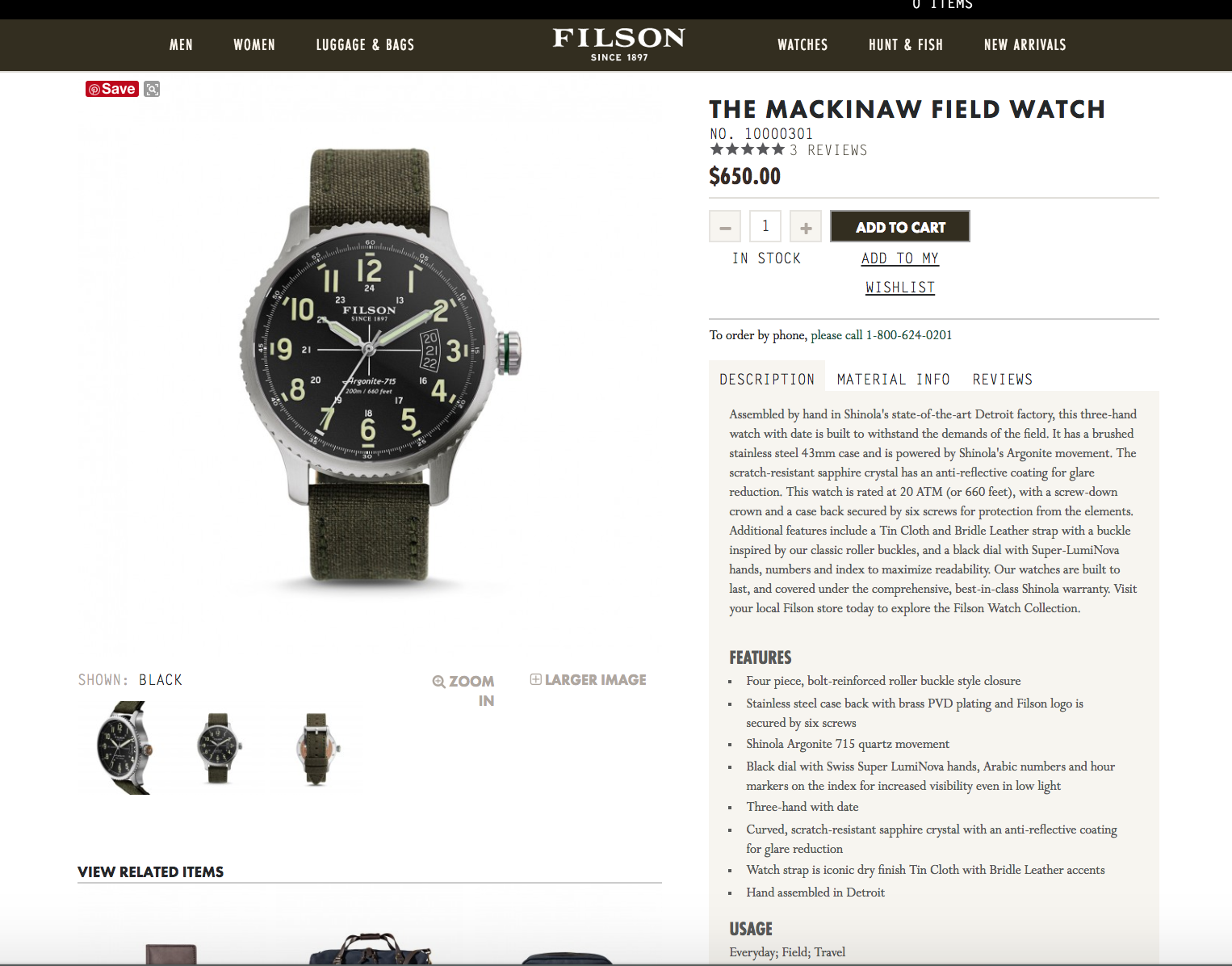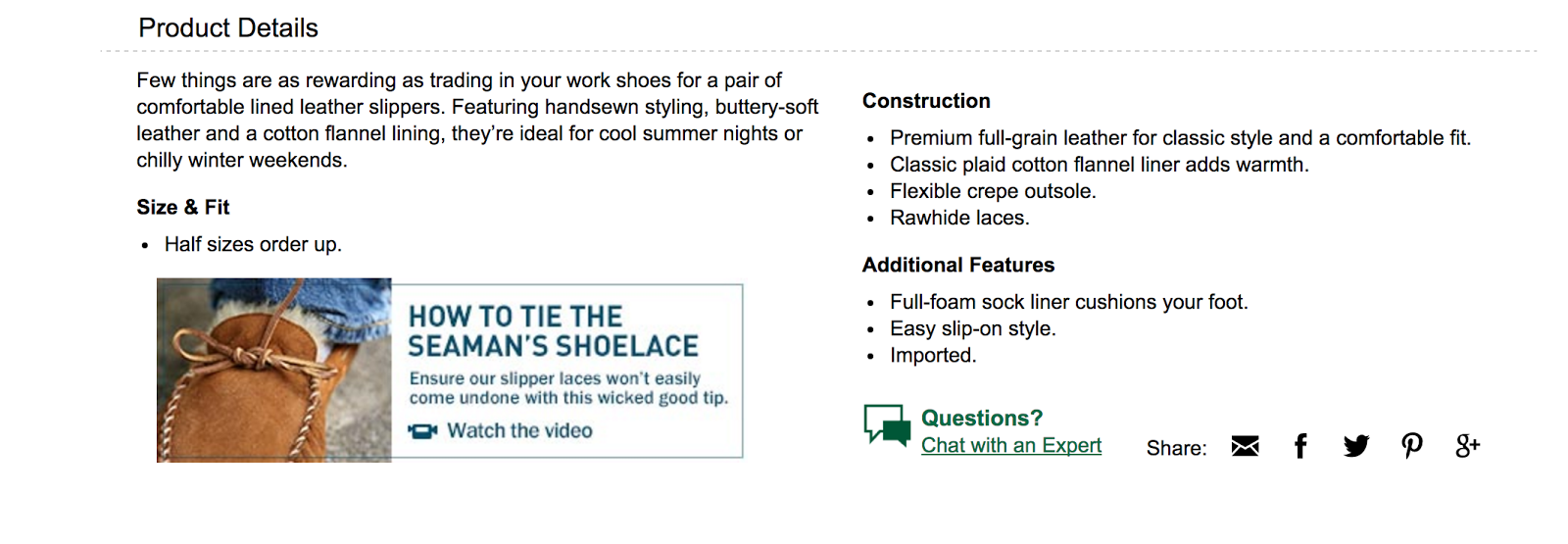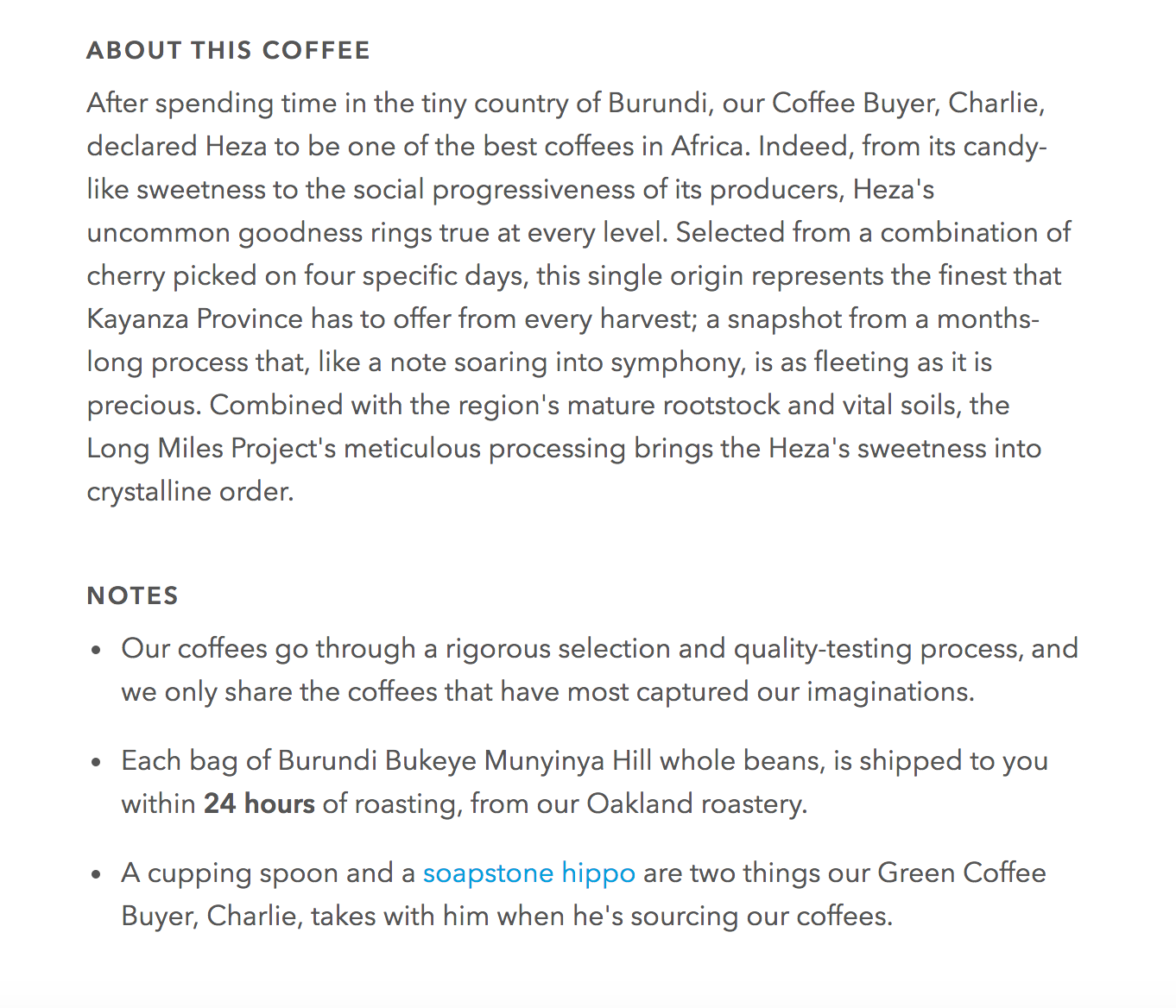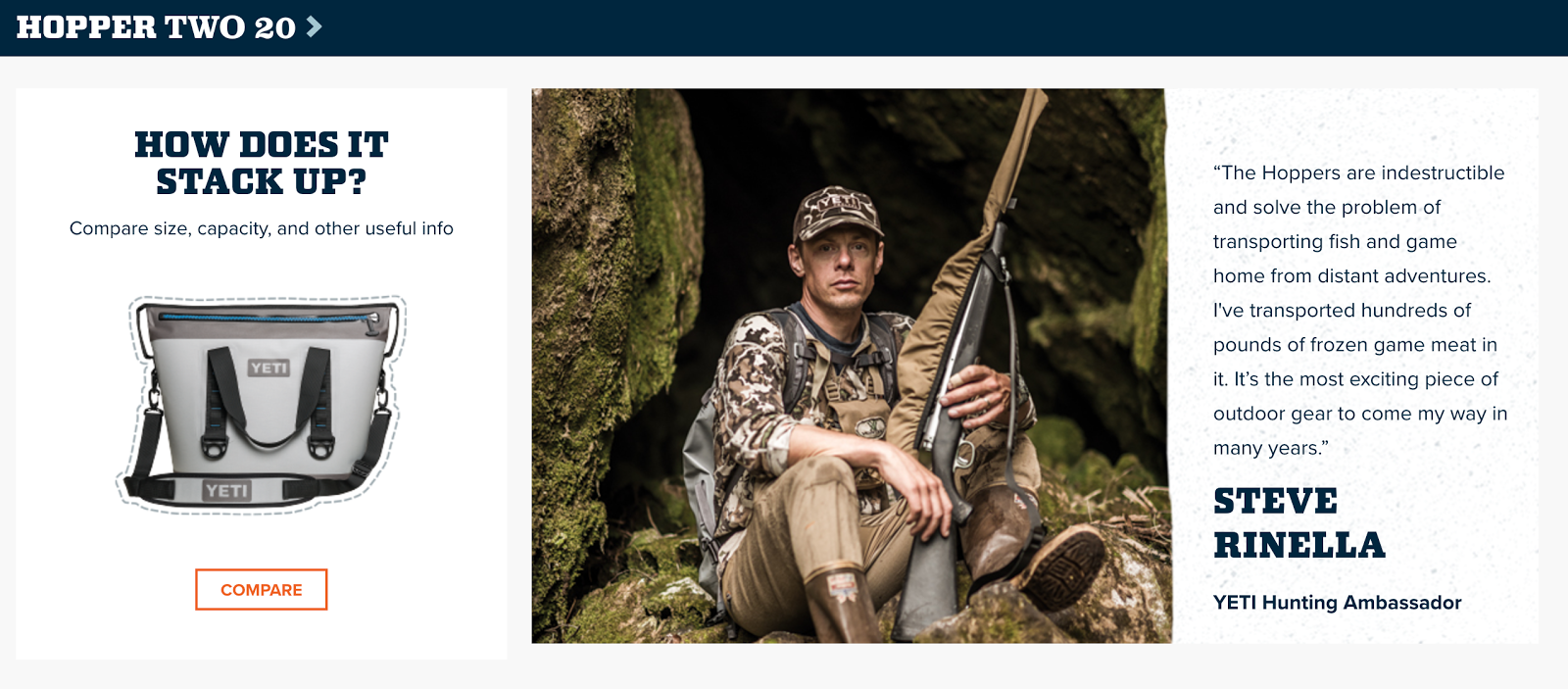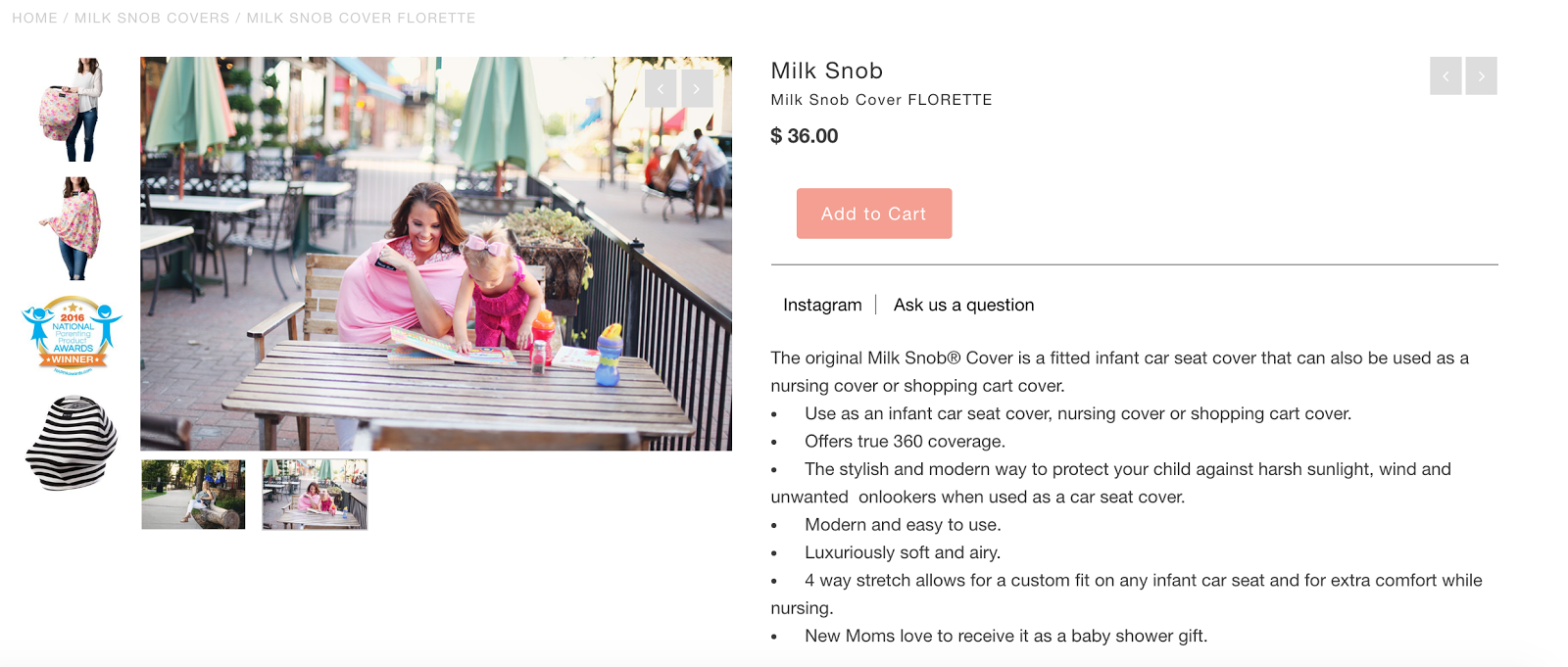You can have the best products in the world, but if you don’t take the time to build conversion-driven product pages, you’re not going to be able to convince your target customers to buy.
There are a number of techniques and components that you can leverage to build better product pages, but at the end of the day, it really just comes down to how you ultimately choose to describe your products.
In ecommerce, words are everything. The copy you include on your product pages can either be your best sales tool, or they can be the deterrent that drives potential customers away from your store and into the arms of your competitors.
So here’s the question: what changes can you make to improve your product descriptions in order to start driving more ecommerce sales?
Here are seven tips that will put you on the right track:
Tip #1: Blend Features with Benefits
In order to be effective, your product descriptions need to blend features and benefits together. That is, you need to help prospective customers understand the what of your product, but perhaps more importantly, you need to help them understand the why.
The what of your product descriptions, or the features, will provide visitors the the technical information they need in order to understand what your product is, how it’s made, and what to expect when it arrives at their doorstep.
The why of your product descriptions, or the benefits, will help visitors understand why they should care about your product, how your products can improve their lives, and what solutions your products can offer.
Features and benefits are both important for different reasons when it comes to convincing prospective customers to buy. Your visitors will look to features in order to compare your products against the products of your competitors. They will look to features in order to educate themselves and work to overcome any hesitation or objections they may have.
Benefits, on the other hand, focus on emotions. Benefits pull at the heartstrings in an effort to convince your visitors that:
1. You understand who they are
2. You know what they are looking for
3. You know why they need help
4. You know your products can solve their problems
To illustrate the power and effectiveness of this technique, let’s look at two examples:
Example #1: Harry’s Shaving Razors: The Truman Set
Notice the blend of features and benefits in this example:
- Features: German blades, flex hinge, lubricating strip, precision trimmer
- Benefits: Gives you a better and more comfortable shave, and helps you get hard-to-reach places
Example #2: Dr. Squatch Soap
Notice the blend of features and benefits in this example:
- Features: cold process soap production method, handmade, no harsh chemicals
- Benefits: nourishes your skin, keeps it safe, keeps it feeling smooth
When you combine features and benefits in your product descriptions, you’re able to cover all your bases and persuade both technical and emotional shoppers.
Tip #2: Use Formulas, Enriched with Style
In general, you should implement and follow the same consistent format when creating your product pages and product descriptions. Doing so will help your customers learn how to quickly find the information they need in order to make a decision, without getting lost searching your copy for answers.
To keep your product descriptions consistent, follow a basic formula when writing the first draft of your product description. Your goal should be to make sure you’re including all the information your potential customers are going to look for when they land on your product pages.
There’s really no single standard formula that you can use that, when implemented, will guarantee an increase in conversions. Every ecommerce brand does it a little bit differently in order to cater to their audience and differentiate from their competition.
That being said, you should seek to answer the following types of questions for customers when you’re coming up with your product description formula:
- Who is your customer?
- What is the 2-3 sentence summary that your audience will need in order to understand what your product is and what it does?
- How does your product work? What does it achieve for people who buy it?
- How is your product made?
- What are the main features of your product?
- What are the main benefits for people who purchase your product?
- What makes your product different than other similar products sold by your competitors (and can you answer without naming actual names?)
- What else does your audience need to know in order to make a decision?
To create better product descriptions for your ecommerce store, create a standard list of questions like the one you see above and use it every time you’re creating or updating a product description.
From there, create a standard formula you can use when building your product pages and incorporating your product description copy. For example, your formula might look something like this:
[Short summary that describes the product and playfully hints at the benefits]
+
[Bulleted list of features]
+
[Longer paragraph about the benefits and differentiation of your product]
+
[Additional sections or tabs that cover technical information or relevant production information]
As you work to incorporate your answers into the standard formula you create, remember that in order to be effective, you need to also infuse some of your brand voice and style into your product copy. If your brand voice is playful, for example, make sure you come across as playful and fun in your product descriptions. If your style is to be more humorous and edgy, make sure it comes through on your product page.
Here are a few examples:
Example from Filson
Example from L.L. Bean
It’s important that you make it easy for customers to scan your product pages and easily find the information and answers they’re looking for, but it’s just as important that you remind people who they are buying products from.
Tip #3: Combine Paragraphs with Bulleted Lists
Another way you can help potential customers scan your product pages faster is by combining paragraphs of text with bulleted lists. This gives website visitors the opportunity to choose how they want to interact with your product pages. They can spend time reading through your more descriptive paragraphs if they want to get a better idea of who you are and what your product is all about, or they can quickly scan bulleted lists for important information that will help them decide if your product meets the basic requirements and expectations they already have established in their minds before coming to your website.
In general, you should use paragraphs to be more descriptive and expressive about your products. Your paragraphs should summarize what your product is, who should use it, why you made it, and how it helps your target customer. Your paragraphs should tell stories and paint pictures for your prospective customers.
Your bulleted lists, on the other hand, should provide visitors with information that helps you differentiate from competitors, and information that best helps them overcome any objections they might have about your products. For example, if you have an ongoing list of FAQs that you seem to always get from new website visitors or customers, try to work answers into a bulleted list within your product description.
Example from Blue Bottle Coffee
When you combine paragraphs and bulleted lists in your product descriptions, you’re again able to cater to different types of shoppers.
Tip #4: Tell Stories (and not just your own)
I spend a lot of time writing about the importance of storytelling on this blog, and that’s because I think it’s one of the biggest drivers of success for ecommerce brands today. If you’re not able to tell and leverage stories about your products and the people who use them, you have no business selling products online.
Because there are new ecommerce shops and brands popping up every week, it’s more important than ever to be able to help your audience understand who you are, why you’re doing what you’re doing, and why they should support you and not someone else. That’s where storytelling comes into play.
Storytelling helps you humanize your ecommerce brand, which is crucial in order to build brand awareness and build a community of loyal customers.
A lot of ecommerce brands think that storytelling is limited to About pages, but they’re missing a huge opportunity. In order to build relationships with people and drive more sales, you should really be telling everywhere—on your homepage, in your email campaigns, on social media, and even on your product pages.
There are three types of stories you can tell in your product descriptions:
Storytelling Type #1: Stories about your products and your company.
- Stories about the origin of your company
- Stories about the creation and purpose of your product
- Stories about the people who make your products
Storytelling Type #2: Stories about your customers
- Stories about the type of customer who buys your products
- Stories about actual customers who have purchased your products
Storytelling Type #3: Stories from your customers
- Real stories told by customers who have purchased your products
- Real stories told by customers about their interaction with you and your company
Each of these stories can be told in a variety of ways, such as through copy, through sourced quotes/reviews/reviews, through curated photos and original graphics, or through video.
Example from Yeti
Example from Milk Snob
When you include more storytelling components on your product pages and in your product descriptions, you’re able to connect with visitors on a more personal level. By showing potential customers that you understand who they are and what their needs are, you can build trust and ultimately drive them to convert.
Tip #5: Leverage Words From Happy Customers
Another way to make your product descriptions more effective is by “borrowing” words from happy customers and incorporating them into your copy. This is a different tactic than simply copying and pasting reviews and testimonials and including them in blurbs on your product pages. In this tactic, what you’re doing is scanning through the reviews that happy customers have left for you (you likely have hundreds or thousands of reviews to choose from), finding common words that are used or common phrases that are used to describe the benefits of your products, and then incorporating that language into your product descriptions.
In a lot of ways, your customers can be your best sales tools and strongest allies. If you were happy enough to leave a positive review about one of your products, they probably have very powerful and compelling things to say. If you actually take the time to scan through your reviews, you’ll likely start to notice common threads and words that multiple customers use. You could let these words sit and age in your reviews section, or you can leverage the words of past happy customers in order to sell new website visitors.
Keep in mind: you’re not copying and pasting word-for-word testimonials and passing them off as your own. That’s not what this tactic is about. Instead, you’re reading through reviews, finding commonalities, and creating new sales copy based on those commonalities. From this exercise, you might discover and decide to use one word or phrase that you keep seeing over and over again, such as “fresh,” or “so soft,” or “dependable” in your updated product description.
Lifting reviews in this way is a simple trick that can help you better relate and connect with people who might not trust your brand or products yet.
Tip #6: Incorporate Other Types of Media
I’ve hinted at it a bit throughout this article already, but I wanted to bring it up again now: another way to improve the effectiveness of your product pages and product copy is by incorporating other types of media like typography, photos, and videos.
A lot of ecommerce brands use the following standard format for their products: title, photo gallery on the left, description column on the right, etc. More and more companies are testing new product pages that feature a blend of text containers, video containers, photo features, and shop now buttons.
If you’re looking to test new techniques to boost sales at your ecommerce store, this technique might be worth trying.
Here are a few examples to give you some inspiration (click the links to view the entire page):
- The iPhone 7 page from Apple
- The Alta Lookbook page from Fitbit
- The Beats X page from Beats
One thing to note: most examples I have found recently come from B2C technology product companies (as you’ll notice in the examples above). If you’re in that industry, I would definitely give this tactic a try. I think it’s also worth testing for clothing and fashion.
Tip #7: Test Length
The final tip for writing better product descriptions is to test copy length. There’s no true answer as far as which works better: short or long copy. It varies depending on industry and audience type. In order to determine which converts higher on your website, you need to run some tests. Use tools like Optimizely or Experiment Engine to run A/B tests that help you get the answers you’re looking for and build better product pages.
Over to You
What changes have you been making to improve your product pages lately? Tell me in the comments below.
